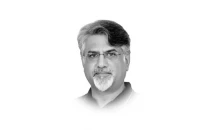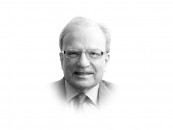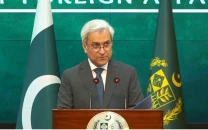Why Trump is tightening up India's screws
India's archetypal practice of changing goalposts when it suits its interests

For many years, India successfully leveraged US tensions with China and Russia to its advantage, playing both ends against the middle. On one side, New Delhi spotlighted its potential as a counterweight to China and on the other, it reaffirmed its allegiance to Chinese- and Russian-led geopolitical blocs, BRICS and SCO, which America believes pointedly challenge its global leadership by pursuing to construct an alternative international order and upend US dollar dominance.
Employing Machiavellian diplomatic maneuvering and lofty claims, India framed itself as a prized American partner whose indispensability was central to implement US Indo-Pacific strategy. Tactics worked as Trump, in his first term, pitched India as a vital ally in the Indo-Pacific to set off a new cold war with China. His successor Joe Biden, after initially pressing India to cut back its oil purchases from Moscow over its invasion of Kyiv, too inveigled it to advance shared interests in the region.
India's archetypal practice of changing goalposts when it suits its interests, what New Delhi calls a non-aligned policy, drove it to circumvent rifts with China, swindle the West and boost trade with Russia. Its trade with Moscow last year topped $68 billion, about six times the pre-pandemic levels. Shockingly, India's imports from Russia accounted for almost 93% of bilateral trade including $50.3 billion spent on buying Russian discounted crude.
The Indian refined oil exports to Europe surged a whisper below 250% from 2019, largely because it shipped Russian crude after refining to European countries. India's staggering trade with Russia, redirected oil shipments to Europe and supply of components for Russian drones for its military campaign in Ukraine hid New Delhi's treacherous currents to exploit the conflict on European shores for its economic gains while supporting the Russian war economy. This binary approach further allowed India to abuse its strategic partnership with the US to evade sanctions and benefit from America's "friend-shoring", becoming for the first time the leading smartphone supplier to the US.
Once Trump returned, New Delhi betted on personal bonhomie between him and Modi to navigate choppy terrain and brave the former's tariff blitz but the president tormented India's lofty plans. After embarrassing it by wooing its arch rival Islamabad and rubbing salt in India's wounds — declaring trade and joint oil exploration deals with Pakistan — Trump ordered a tariff hike of 50% on India in response to its "most strenuous and obnoxious non-monetary trade barriers" and oil purchases from Russia.
Deals with Islamabad may cloak Washington's geopolitical interests in mineral-rich Balochistan such as monitoring Iran's nuclear programme and counter Chinese influence; America's presence in insurgency-riven province will represent complex challenges for India's subversive agenda of stoking sedition in neighbouring country through support for secessionist movements and terrorist organisations.
The goal behind Trump's India bashing is, unarguably, transactional. Unlike Moscow, New Delhi maintains a jaw-dropping trade deficit in goods with Washington of $45.8 billion. He wants to rebalance this lopsided trade relationship that is heavily tilted toward India owing to its tariff and non-tariff barriers, with his rhetoric dispatching New Delhi in a state of paranoia.
Data from World Trade Organization (WTO) reckons India's simple average tariff rate at 17% compared to America's 3.3%. These high tariffs and factors such as import restrictions, import licensing and medical device price control (Page 197) as well as poor environmental standards, with particulate matter (PM2.5) roughly 10 times the World Health Organization's guidelines, stifle foreign competition and unfairly bolster domestic competitiveness.
Modi's vision — 'Atmanirbhar Bharat' or 'Viksit Bharat 2047' — replicates Trump's 'Make America Great Again' to 'Make India Great Again' including by imposing a simple average agricultural tariff of 39% in contrast to America's 5%. Such protectionist policies had, hitherto, allowed New Delhi to take advantage of its strategic location in the Indo-Pacific to reap trade and economic advantages from America yet have now put India at Trump's point-blank range whose volley of tariff bullets threaten to shave off half a percent of Indian GDP.
Not only is Trump's claim - that India is "selling (Russian oil) on the open market for big profit" — precisely accurate, he's also right when he labels India a "tariff king" with "one of the highest tariffs in the world". It's New Delhi's indisposition to cut taxes rather than Trump's stubbornness that poses risks to the decades-old Indo-US relationship.
Expecting Trump to underrate India's economic potential and strategic significance would, however, be naïve. His core objective instead is to weed out irritants from the bilateral relationship, which could propel the strategic US-India partnership into obfuscation, to strengthen the US-India hyphenation for long-term geopolitical goals in the Indo-Pacific. It was illustrated by "US-India COMPACT for the 21st Century" that pledged to "elevate military cooperation across all domains" in the region.
But first, he seeks to settle the trade score. Since February, Trump's aides have been negotiating a deal with New Delhi to address the bilateral trade deficit by augmenting sale of US military equipment and oil and gas to India. Despite several rounds of talks, there's no progress on a US-India deal, insinuating the latter's reluctance to open its market for US businesses and buy defence gear and energy supplies from Washington. India would hope to go scot-free over broader US objectives to use India as a strategic hedge against China; yet Trump, this time, is in an unforgiving mode.
More than two decades after supporting China's accession to WTO, the US is bewailing its strategic lapse of clearing the way for Beijing's dominance in world manufacturing. By tightening up the screws on India, Trump is buckling down to minimise the specter of another 'China Shock' that would be a death knell for US competitiveness and its downward-leaning global leadership.















COMMENTS (1)
Comments are moderated and generally will be posted if they are on-topic and not abusive.
For more information, please see our Comments FAQ